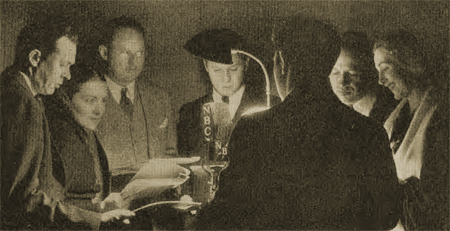
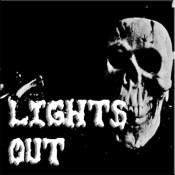 Lights Out aired “Sub-Basement (Going Down)” on August 24, 1943. The original iteration of Lights Out! ran from 1934-39, producing some 274 original scripts (of which only around 140 are believed to still exist), though it was revived for short periods of time–using many recycled or updated scripts from the 1930s–off and on until 1947. The show was created by Willis Cooper who, the story goes, after a hard day’s work and tired of listening to the same old late night radio dance band programs, decided to write his own supernatural and horror stories for his own amusement (though he frightened himself so much that sometimes he couldn’t finish his own stories until the next morning). A fan of mystery and horror stories (he was especially frightened of ghost stories), he eventually convinced a local Chicago radio station (an NBC affiliate) to produce Lights Out! using his own material, and which would air at midnight, far past the bedtime for impressionable children. After the show had run for maybe a year it was announced without fanfare that the show was at an end, whereupon the radio station was deluged with irate fans from around the country demanding the show continue. Bowing to the pressure, the program was quickly revived and within three weeks Lights Out! once again was scaring the pants off of its ever-growing cult-like audience. It became so popular that fan clubs sprang up all over the country and numbered around 600 by mid-1936. Small to large groups of fans would gather at a host’s house and play cards or listen to the radio for hours ahead of the show’s midnight airing, for it was the early 1930s shows that made it one of the most talked about horror shows of all time, notably for its gruesome sound effects and grisly scenes of murder (dismembered bodies, bodies dissolved to bones in acid baths, etc.).
Lights Out aired “Sub-Basement (Going Down)” on August 24, 1943. The original iteration of Lights Out! ran from 1934-39, producing some 274 original scripts (of which only around 140 are believed to still exist), though it was revived for short periods of time–using many recycled or updated scripts from the 1930s–off and on until 1947. The show was created by Willis Cooper who, the story goes, after a hard day’s work and tired of listening to the same old late night radio dance band programs, decided to write his own supernatural and horror stories for his own amusement (though he frightened himself so much that sometimes he couldn’t finish his own stories until the next morning). A fan of mystery and horror stories (he was especially frightened of ghost stories), he eventually convinced a local Chicago radio station (an NBC affiliate) to produce Lights Out! using his own material, and which would air at midnight, far past the bedtime for impressionable children. After the show had run for maybe a year it was announced without fanfare that the show was at an end, whereupon the radio station was deluged with irate fans from around the country demanding the show continue. Bowing to the pressure, the program was quickly revived and within three weeks Lights Out! once again was scaring the pants off of its ever-growing cult-like audience. It became so popular that fan clubs sprang up all over the country and numbered around 600 by mid-1936. Small to large groups of fans would gather at a host’s house and play cards or listen to the radio for hours ahead of the show’s midnight airing, for it was the early 1930s shows that made it one of the most talked about horror shows of all time, notably for its gruesome sound effects and grisly scenes of murder (dismembered bodies, bodies dissolved to bones in acid baths, etc.).
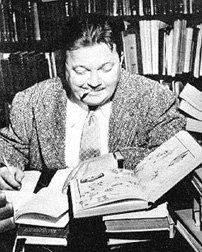
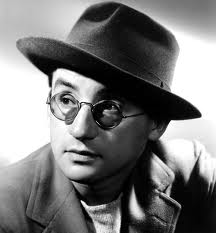 Even the cast and crew became so involved in the plays they were reading or producing that as the programs began all lights in the studio were turned off, except for the pin lights needed for the reading of the scripts or those needed by the equipment technicians. Cooper (1899-1955, photo at left) was at the helm from the show’s inception in 1934 through mid-1936, at which point he would venture to Hollywood to work on films (most notably the script for the mediocre 1939 Son of Frankenstein). From 1936 on the wunderkind Arch Oboler (1909-1987, photo at right) would, with rare exceptions, write all of the show’s scripts, sometimes borrowing or adapting stories from his other radio shows, a few with a much more social or political message (Oboler was a staunch anti-Nazi)–though retaining the much-loved supernatural or horror element.
Even the cast and crew became so involved in the plays they were reading or producing that as the programs began all lights in the studio were turned off, except for the pin lights needed for the reading of the scripts or those needed by the equipment technicians. Cooper (1899-1955, photo at left) was at the helm from the show’s inception in 1934 through mid-1936, at which point he would venture to Hollywood to work on films (most notably the script for the mediocre 1939 Son of Frankenstein). From 1936 on the wunderkind Arch Oboler (1909-1987, photo at right) would, with rare exceptions, write all of the show’s scripts, sometimes borrowing or adapting stories from his other radio shows, a few with a much more social or political message (Oboler was a staunch anti-Nazi)–though retaining the much-loved supernatural or horror element.
“Sub-Basement” comes to us from Oboler’s 1942-43 revival of the show and is one of the most fondly remembered from that period. No political or social overtones here, simply a journey into fear as a husband relents to his wife’s many badgering requests to show her what exactly he does for a living. The husband is a lowly elevator operator in a large department store, which elevator runs deep beneath the store to the subterranean railway of the Chicago Tunnel Company, where goods are unloaded for the store to then stock. It is after-hours when the store is closed, the cavernous building is empty and silent, and lights are turned off as the couple make their descent into the underground tunnels and walkways of the sleeping behemoth. The tension becomes excruciating as the wife becomes increasingly afraid of the enveloping darkness through which her husband leads her–by way of showing her what his job entails during the daylight hours. But then…but then an unfamiliar noise is faintly heard…and then again, louder, and now even the husband becomes deathly afraid of this new unknown…moving closer and closer until his wife gets a glimpse of it. What she sees, and recognizes, is not for me to say here, except to impart that it throws a whole new light on the eventual outcome of this otherwise straight-up horror tale.
Urban fantasy or horror seems all the rage today, but it is nothing new as “Sub-Basement (Going Down)” is clearly an example of one variation of this sub-genre from 1943, over 70 years ago.
Play Time: 25:28
{August of 1943 found the United States in the middle of the war in the Pacific and the war in Europe, but that hardly deterred the neighborhood infantry from marching to the closest newsstand for their favorite inspirational reading, a few examples of which are shown below. As always, Astounding was holding to its monthly schedule–and this issue saw the publication of one of C. L. Moore’s most famous stories, “Judgment Night,” which would later be published in novel form with the same title. Doc Savage was still going strong in 1943 with its monthly schedule–with a cover story “The Mental Monster,” that lured with its SFnal overtones; and because one of the neighborhood gang’s older brother had recently enlisted in the Army in the hope of becoming a pilot (the United States Air Force wouldn’t become its own official branch of the U.S. Armed Forces until September 18, 1947), younger brother’s thoughts had turned to everything war-oriented and so chose the Summer 1943 issue of Army/Navy Flying Stories this time around. This war pulp would publish 13 issues between 1942 and 1945, with a full quarterly schedule in 1943 and 1944. The issue below was its fifth.}
[Left: Astounding, Aug. ’43 – Center: Doc Savage, Aug. ’43 – Right: Army/Navy Flying Stories, Summer ’43]
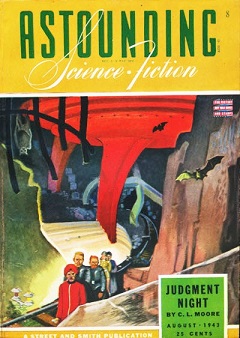
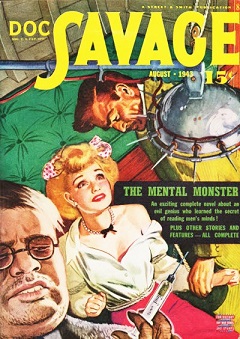
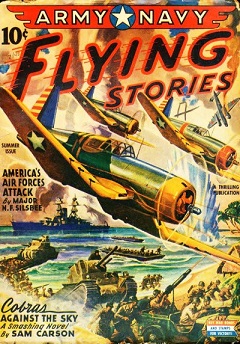
To view the entire list of weekly Old Time Radio episodes at Tangent Online, click here.